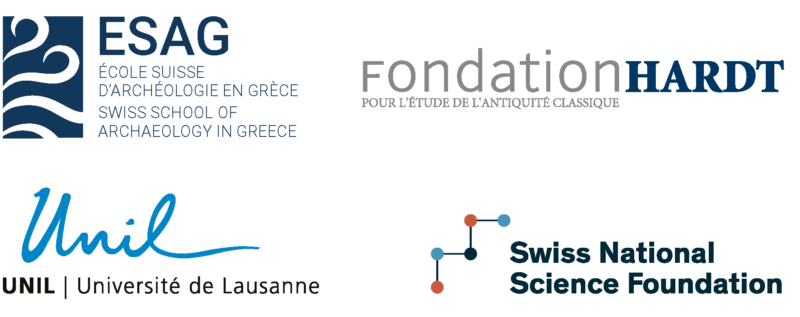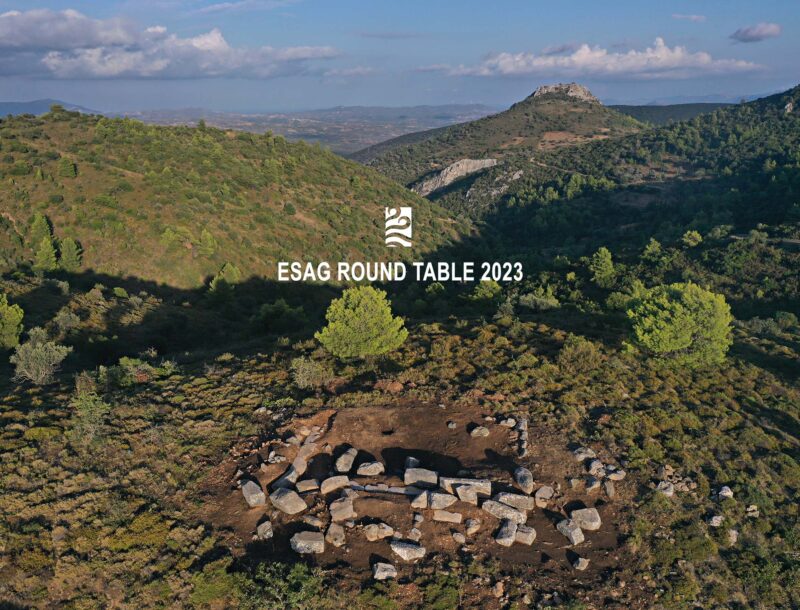Round Table Reconstructing Greek Sacred Landscapes
Fondation Hardt
Vandœuvres
February 2–4, 2023
Reconstructing Greek Sacred Landscapes: Dynamics and Approaches from the Field
A sacred landscape is created by the spatial projection of relationships between human and supra-human forces. In the territory of a Greek polis, it is materialized by a set of places linked between them by mobility and visibility networks. A sacred landscape is also collectively devised, expressed, and put into action by stories and rites. Far from being congealed, the sacred landscape goes under continuous changes, like the mental and monumental constructs which compose it.
In the study of Greek religion, the sacred landscape has long been accounted for, yet without being designated as such. As a concept, it has received increased attention for over a decade. Thanks to theoretical approaches, its definition has gained substance, and several of its facets have been highlighted by case studies devoted to various regions and chronological periods.
However, reconstructing the sacred landscape of a Greek polis, in all its complexity, remains challenging. At the confluence of several disciplinary fields, the process requires the constant integration of various approaches. The present round table is designed with these issues in mind. Organized within the theoretical account of a research project dedicated to the polis of Eretria and its extra-urban shrine at Amarynthos, the round table is intended to open the discussion on this specific case by adopting a forward-looking perspective: we aim at finding a direct field of application through critical thinking on current approaches as well as new orientations and experimental methods.
The round table includes three sessions. The first is dedicated to literary and archaeological sources. The second wishes to explore existing or well-documented sacred landscapes in a comparative manner. The third session deals with a recurring issue: the relationship between politics and religion in the construction process of ancient Greek territories.
PROGRAM
Thursday, February 2
18.00-18.30 Welcome
18.30-19.00 Introduction
19.00-19.45 Keynote lecture. François DE POLIGNAC (École Pratique des Hautes Études, Paris)
Friday, February 3
Session 1. The Sacred Landscape between Literary and Archaeological Sources
One should ideally exploit the complementarity between literary evidence and archaeological data when reconstructing a sacred landscape. But what is left when literary sources are missing? Can archaeological survey fill in this gap? Based on the results of multiple survey projects in Greece, data of religious nature appears to be relatively discrete in the absence of monumental constructions. Is it possible to reorient research in order to overcome the low visibility of sacred places outside prominent sanctuaries?
Chair Karl REBER, University of Lausanne
9.00-9.30 Quel paysage religieux en Arcadie sans Pausanias ? Madeleine JOST (University of Paris Nanterre)
9.30-10.00 The Presence of the Sacred in Central Greece: The Evidence from the Boeotia Survey. John BINTLIFF (Leiden University)
10.00-10.15 Discussion
10.15-10.30 Break
10.30-11.00 Olympia and its Environs: The Development of a Sacred Landscape in the Light of the Recent Survey. Birgitta EDER (Österreichisches Archäologisches Institut/ÖAW)
11.00-11.30 Kalapodi and the Evolution of a Sacred Landscape in Ancient Phokis. Katja SPORN (Deutsches Archäologisches Institut Athens)
11.30-11.45 Discussion
11.45-13.00 Break
13.00-13.30 Recognizing Sacred Places in Southern Euboia. Towards a Reconstruction of the Sacred Landscape of Archaic and Classical Karystia. Jan Paul CRIELAARD (Vrije Universiteit Amsterdam)
13.30-14.00 A Sanctuary within its Landscape: The Eretria Amarynthos Survey Project. Sylvian FACHARD (University of Lausanne), Angeliki SIMOSI (Ephorate of Antiquities of Euboea)
14.00-14.45 Closing discussion of session 1
14.45-15.00 Break
Session 2. Current sacred landscapes
In polytheism, gods are everywhere. Because their topographical grounding leaves minimal traces, archaeology struggles to measure the phenomenon and account for it coherently. Therefore, it seems useful to compare our evidence with contemporary polytheist societies or related systems (such as the cults of saints in Christianism). This comparative approach should help us contextualize the ancient Greek landscape more acutely.
Chair Dominique JAILLARD, University of Geneva
15.00-15.30 Les paysages de la baraka : ruines, bornes et mausolées au Maroc. Romain SIMENEL (French National Research Institute for Sustainable Development, New Delhi)
15.30-16.00 Entre la forêt et l’Océan, le temple : le paysage religieux à Puri (Odisha, Inde). Raphaël ROUSSELEAU (University of Lausanne)
16.00-16.15 Discussion
16.15-16.30 Break
16.30-17.00 Byzantine Sacred Landscapes on the Move. Fotini KONDYLI (University of Virginia)
17.00-17.30 Late Antique and Medieval Religious Landscapes in the Area of Amarynthos. Myrto VEIKOU (Patras University)
17.30-18.15 Closing discussion of session 2
Saturday, February 4
Session 3. Polis Territories and Sacred Landscapes
Since F. de Polignac’s La naissance de la cité grecque, the role of sanctuaries in the making of poleis has been studied with great care. By putting in perspective several study cases, including that of Eretria-Amarynthos, our goal is to review the various models and show how this specific issue fits in a larger research agenda on sacred landscapes, from the Late Bronze Age/Early Iron Age transition to the end of the Archaic period.
Chair Sandrine HUBER, University of Lille
9.00-9.30 Between Political Community and Ritual Landscape : Reflections from the Oxford History of the Archaic Greek World. Cathy MORGAN (University of Oxford)
9.30-10.00 Ephesos – A Sacred Landscape Changing with the Development of the City from the Early Iron Age to the Early Hellenistic Period. Michael KERSCHNER (Österreichisches Archäologisches Institut/ÖAW – Leiden University)
10.00-10.15 Discussion
10.15-10.30 Break
10.30-11.00 Un réseau identitaire à plusieurs couches: dynamiques du paysage religieux de l’Attique sur le long terme. Lorenz BAUMER (University of Geneva)
11.00-11.30 Une kômè et un hiéron pas tout à fait comme les autres: Amarynthos dans les structures politiques de la cité d’Érétrie (de l’époque archaïque à la période impériale romaine). Denis KNOEPFLER (Collège de France)
11.30-12.15 Closing discussion of session 3
12.15-12.30 Break
12.30-13.15 Conclusive remarks. Vinciane PIRENNE-DELFORGE (Collège de France)
Contact and Information
The round table will be broadcast by video conference.
unil.zoom.us/j/99369573474
Website : www.esag.swiss/roundtable2023
Contact and information : roundtable2023@esag.swiss
Fondation Hardt, Chemin Vert 2, 1253 Vandoeuvres, Switzerland (Google Map)

